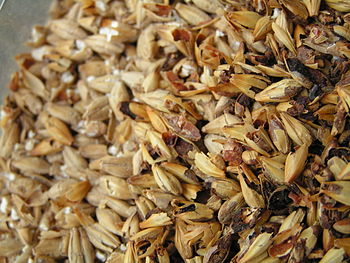
It is time to make beer again. I have a request from a fan to make something “tall, dark and handsome”. I thought about that might be in a beer and came across Oatmeal Stout. Several years ago, I made one called Crystal My Oats, but that recipe was lost in BeerSmith when my computer crashed (back when I as running Windows still). I do remember elements of it and that was extract, how to make one via all-grain?
Time for some research
As I learned to homebrew in the mid 90’s, the old archive Cat’s Meow 3 is my first stop, always. Sure, there are more up to date places to find recipes, but I like the simple format of this archive and it feels like home. I am looking for general guidelines more than specific rules that must be followed at all costs, so it also fits my style better.
Searching through the oatmeal stouts lead to many extract recipes. Nuts. I need an all-grain. There’s one. But it uses flaked barley. And another. Nice. Rolled oats. Notes jotted.
A search via Google returns hits at several places, most of them discussions about a particular recipe. Do rolled oats go in the mash tun or on the stove for steeping and fading in? Where is Charlie Papazian’s phone number when I need it??? Answers found.
Start up BeerSmith
I chose the Oatmeal stout guide and start working on ingredients. It doesn’t take long and the SRM and bitterness guidelines are blow. Oh well. I want it DARK! Based on batch size and boil time, the estimated SRM is 46.7. Awesome! The upper limit is 40 for the style, but what’s 6.7 among friends???
The IBUs estimate to 52, ah only 12 over style. No worries. And that makes some assumptions about utilization in the boil. Maybe it will lower or higher. No worries.
Once complete, the parts list looks like this:
- 14 pounds pale malt
- 1.5 pounds Roasted Barley
- 1 pound of Chocolate Malt
- 1 pound of Caramel/Crystal Malt (80L)
- 2 ounces of Centennial hops (10%) – 60 min
- 1 packaged of Irish Ale (Wyeast Labs #1084)
I really do want a beer near 10%. If the efficiencies in conversion and sparging have hit 72%, this one might get to 9. That’s good. The idea is to either put vanilla beans in secondary or use vodka to make an extract. Wait! Why vodka? What about bourbon instead?
Researching Home Made Vanilla Extracts
Back to Google for some searching. The best site on thekitchn.com. Wow. Didn’t know there were various types of vanilla beans. Based on the descriptions, looks like Bourbon or Madagascar beans are in order. Now, make an extract or just put 3 of them in the secondary for 10 days? Hmmm.
The site has great ideas. Perhaps put some in bourbon and some in the secondary? Decisions. Decisions.
Made the Beer
Used a single step mash of 150 degree water for an hour. Mash density was 1.25 quarts per pound. Sparge water at 170 degrees until 6 gallons were collected. As the boil is an hour, about 1 gallon will be lost to evaporation.
Once the wort was chilled and in the fermentor, the hydrometer reads 15 on the Brix scale. Potential here is 8.2% and the Specific Gravity once converted is 1.0611. A bit lower than the target, but not too bad for a fly sparging novice. Now to keep at a good temperature for fermentation without getting esters from the yeast. Updates will follow.












